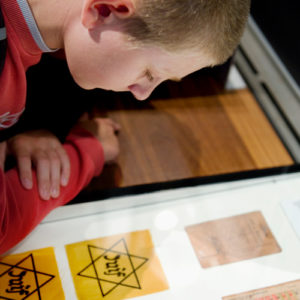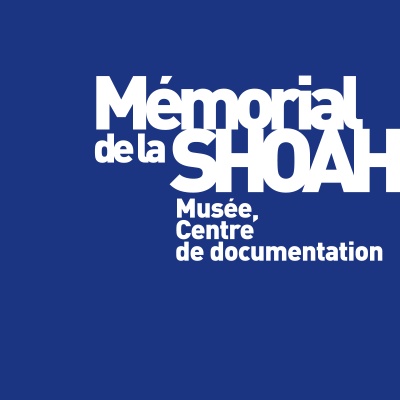Tips for teaching the history of the Holocaust to primary school students
How to approach genocidal history while respecting the sensitivity of children? The pedagogical team of the Shoah Memorial has drafted, with teachers, a set of operational advice for the attention of middle school teachers.

Teaching the history of the Shoah at the first level raises a certain number of questions that concern respect for the sensitivity of children, the choice of themes to be addressed, the relevance of the testimony... The pedagogical team of the Shoah Memorial has developed a synthesis, enriched by the experience of school teachers, in order to guide the teacher in his approach.
- To approach the history of the Shoah, it is advisable to use a medium and start the sequence with the study of a book or a film.
- The second step is to review the chronology of events and clarify the specific vocabulary in order to demonstrate the outcome of the exclusion process.
- It is also necessary to take into account the knowledge of children on the subject and their imagination. Primary school students are confronted very early on with a lot of information, especially in the media: press, radio, television, through the internet or their family environment. It is not a matter of drowning the child in a mass of information but of helping him to organize his knowledge on the subject.
- It is advisable to present a map in order to locate the countries at war and the major centers of Jewish life.
- Documents can illustrate themes to approach (photographs, children’s drawings, letters from hidden children). The photographs must be chosen with care because they attest and fascinate powerfully. It is not, of course, a matter of directly showing children photographic or film representations of the genocide.
Children can be solicited by asking them to bring objects to class (badges, newspapers, tracts, posters and photographs...).
- At the end of the sequence, we can propose to the children an activity of plastic art on the theme approached so that they can exteriorize their emotions: drawing, painting, collage, expression of text... and try to respond in class to each student’s question.
- The teacher must remain cautious because he can cause rejection, or even saturation on this subject. It is necessary to return to the specificity of the Shoah and, then, possibly expand with intelligibility to other victims of racism and mass crimes (the genocide of Armenians in 1915 and the genocide of Tutsis in Rwanda in 1994).
- Beyond the horror of the crime incomprehensible to the students, it is about to convey a message of hope and to envision a better world.
Here, can be evoked: the democratic achievements such as justice, secularism, citizenship; certain essential values such as tolerance, humanism, universalism; the establishment of a solid and lasting peace between France and Germany within the framework of Europe after three conflicts. What is it to be French? What do we have in common? (The language, the country, the places of memory, the cuisine...)
Resources
One can approach the history of the Shoah through multiple approaches, through various subjects: history – geography, civic education, French, artistic subjects and 'peri-school' activities: meeting with witnesses, with writers who wrote about this period, shows, exhibitions, film screenings, activities of the Shoah Memorial-Museum... It is necessary to remain attentive to cultural and artistic news.
Meet a witness
- The meeting with witnesses who have lived through this period must be carefully prepared for both the children and the witnesses. It is necessary to ask the witnesses to speak only of their personal experience, to try as much as possible not to do a history lesson but to situate themselves closer to their lived experience. It is prudent to check beforehand that the witness’s speech is well understandable and does not unnecessarily mention details that are traumatic for the young listener.
- The teacher must prepare the children for his coming and insist on the fact that it is impossible to judge, a posteriori, an event whose tragic end we now know, in order to avoid indecent and arrogant questions despite themselves.
Educational and cultural activities of the Museum-Memorial
Sarah’s Attic
On the site of the Memorial, the Attic of Sarah is an initiation site to the history of the Shoah dedicated to 8-12 year olds, children’s paths are presented as well as a frequently asked questions (FAQ) for the youngest, a bibliography, a comparative chronology and a dictionary of the Shoah accessible from all pages of the site.
ACCESS THE SITE "SARAH’S ATTIC"

